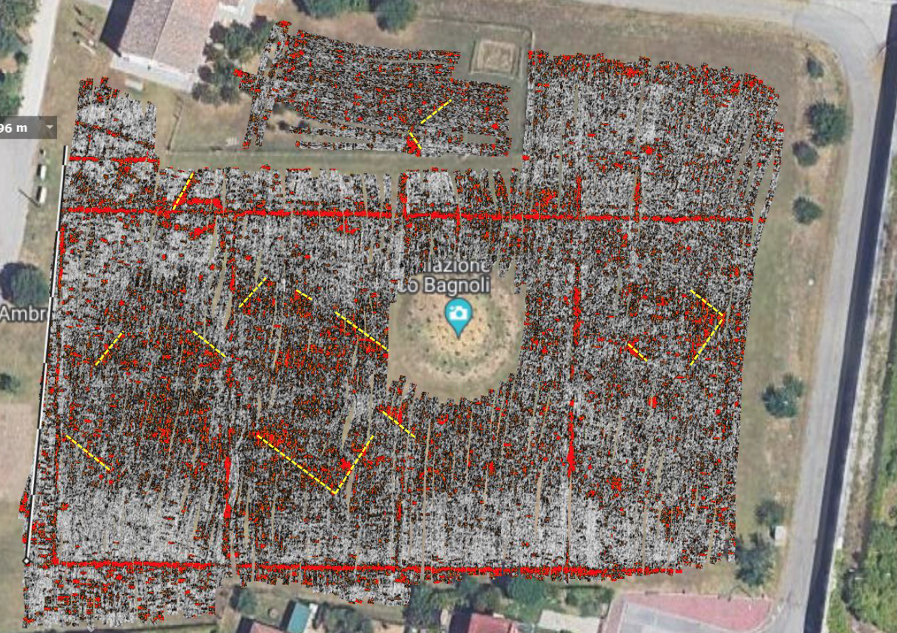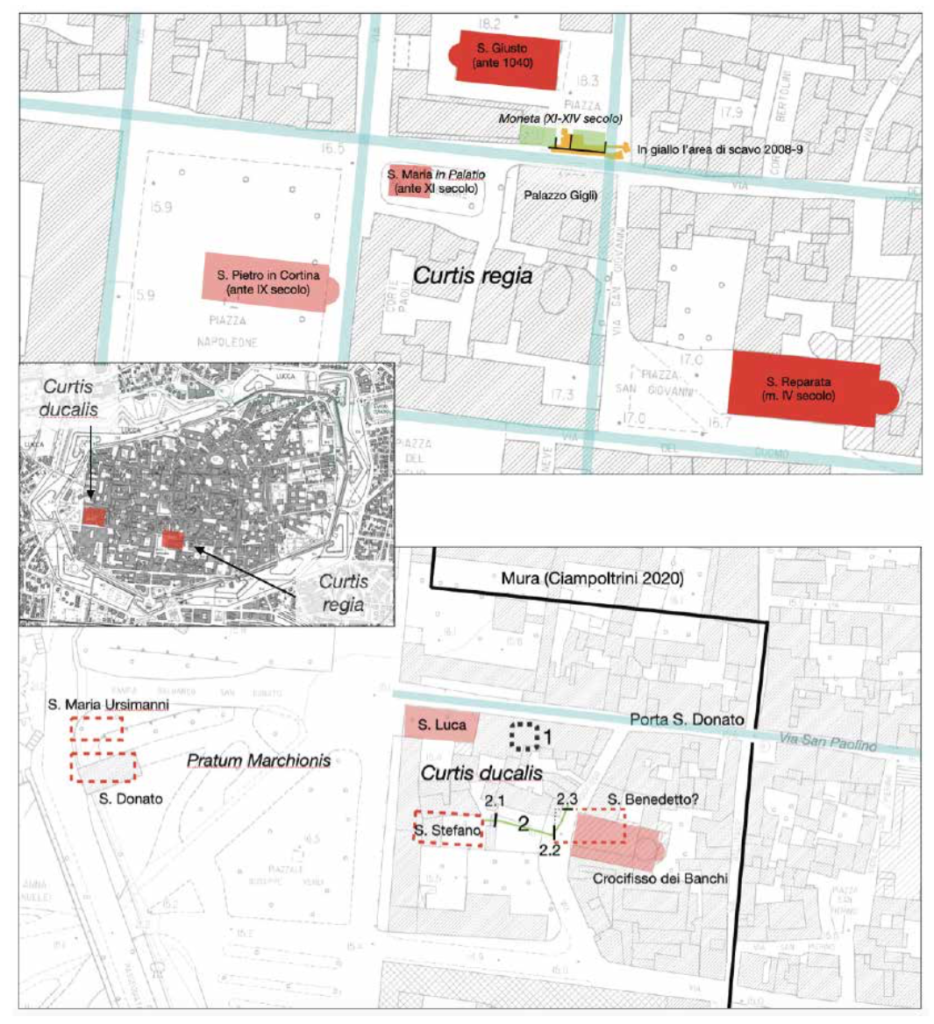Department of Civilizations and Forms of Knowledge, University of Pisa
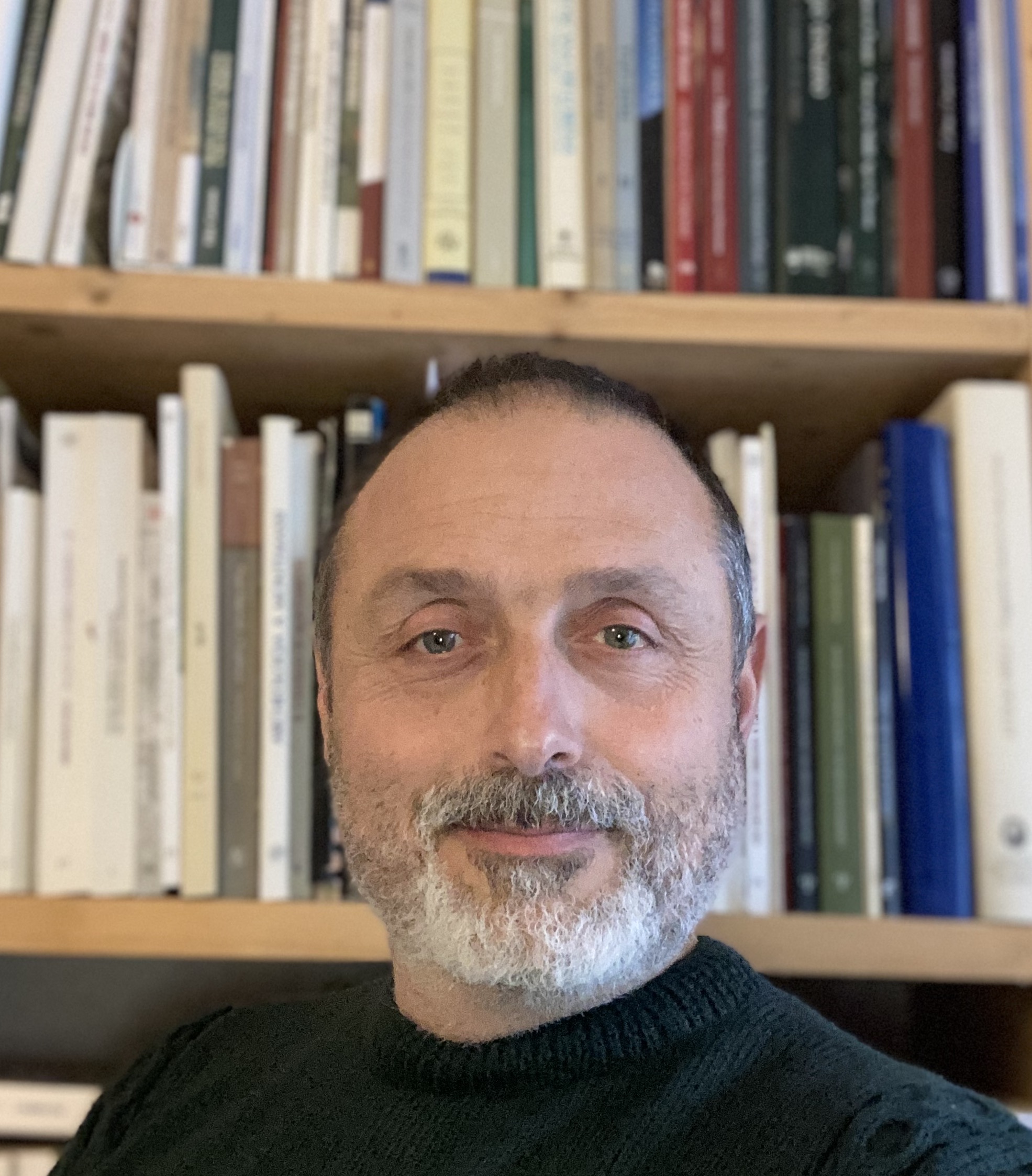
Federico Cantini
Full Professor in Christian and Medieval Archaeology
Principal Investigator Pisa Research Unit
Short Bio
UNIVERSITY EMPLOYMENT: *University of Pisa: Full Professor in Medieval Archaeology (2018-); Director of the Specialization School in Archaeology (2017-2023); *member of the School team of Ph.D. in medieval Archaeology (University of Siena, 2007-2008), Humanities (University of Pisa, 2009-2012), Antiquities and Archaeology (University of Pisa, Siena and Florence, 2012-); * University of Pisa Chancellor’s Delegate for the Promotion of Research in the Social Sciences and Humanities.
EDUCATION: *University of Siena B.A. in Medieval Archaeology (supervisors: Prof. Riccardo Francovich, Alessandra Molinari, 1999), Ph.D. in Medieval Archaeology (supervisors: Prof. Riccardo Francovich, Alessandra Molinari, 2003); Research grant (2008/2009), * University of Pavia: Training in optical microscopy (2006).
ORGANIZATIONS MEMBER: Society of Italian Medieval Archaeologists (SAMI, 2000-); Interuniversity Center for the History and Archeology of the Early Middle Ages (SAAME, 2009-); Historical Society of Pisa (2014-); President of the Italian Post-Classical Archaeologies University Council (2022-)
SCIENTIFIC JOURNAL: editorial staff of Annali di Storia di Firenze (2008); referee and correspondent of Archeologia Medievale (2011-); member of the editorial board of Facta (2015-); member of the editorial board of Archeologie sperimentali. Temi, metodi, ricerche (2019-).
DIRECTION of RESEARCH PROJECTS:
*Local PI of the PRIN 2008 (Univ. Pisa); Local PI of the PRA 2017 (Univ. Pisa); National PI of PRIN 2022; Local PI of PRIN 2022 PNRR (Univ. Pisa);
MEMBER OF RESEARCH PROJECT: PRIN 2010-11 (Univ. Sassari); PRIN 2017 (Univ. Pisa); PRA 2015 e PRA 2020 (Univ. Pisa); PE5 – CHANGES Cultural Heritage Active Innovation for Sustainable Society, Spoke 1 -Historical Landscapes, Traditions and Cultural Identities – PNRR (Univ. Napoli) (2022-);
DIRECTION of ARCHAEOLOGICA EXCAVATIONS/SURVEYS: Roman and Medieval village and church of San Genesio-Pisa (2003-16, 2023); Late Roman villa of Oratorio-Florence (2010-2016); medieval castle of Scopetulo/Migliana-Pisa (2014-2016); Roman and Medieval Rural settlement of Contrada Cifali-Ragusa, Sicily (2019); Early Medieval Royal Court of S. Sisto-Pisa (2020-2022); archaeological survey (San Miniato-Pisa) (2010-2011).
CONGRESSES (AS SPEAKER): 40 national; 37 international; (AS ORGANIZER) 8 Congresses and 20 Conferences (Univ. of Siena, Pisa).
PUBLICATIONS: 3 monographs, 48 papers in journals, 21 parts of books, 33 proceedings in national congresses and 33 in international congresses, 4 editions of congress, 1 editions of book, 2 reviews in journals.
MAIN RESEARCH INTERESTS: Late Roman and early Medieval settlement and economy; Public power settlement and material culture; Late Roman and Medieval religious settlement (churches and cemeteries); Late Roman and Medieval pottery.
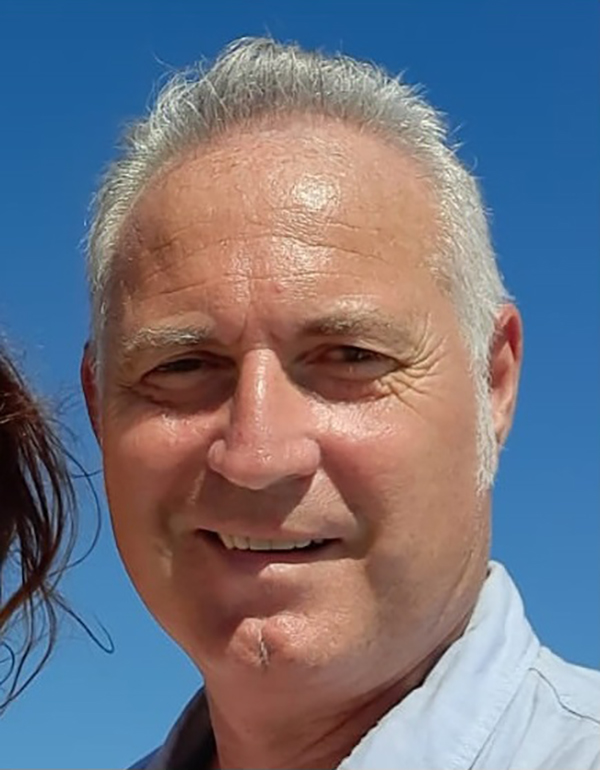
Fabio Fabiani
Associate Professor
in Classical Archaeology
Study of transformations in Roman cities centers of power between the IIIrd and the VIth cent. AD
Short Bio
Fabio Fabiani is a lecturer in Classical Archaeology at the University of Pisa, a CNR-ISMA associate, and an honorary member of the Italian Archaeological School of Carthage. Scientific head of excavations in Italy and Tunisia, he is engaged in multidisciplinary research focusing on urbanism, architecture and geoarchaeology, aimed at reconstructing the ancient landscape.
He directs ‘Pisa Suburbio project’, aimed at reconstructing settlement and economic activities of the Roman city’s suburbs.
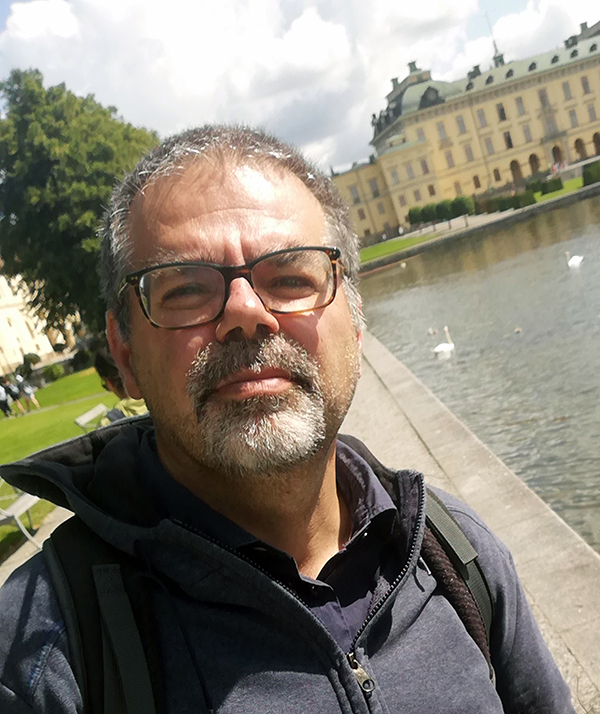
Stefano Genovesi
Research Fellow
Study of transformations in Roman cities centers of power between the IIIrd and the VIth cent. AD
Short Bio
Stefano Genovesi is a classical archaeologist, PhD in Ancient History with a study on the administration of the imperial owned mines, has been a research fellow at the Department of Civilisations and Forms of Knowledge of the University of Pisa (2020-2022), conducting a study on the theme of suburbia in the Roman world. He is currently a member of the Pisa Progetto Suburbio and scientific director of the Museo del Marmo and of the archaeological area of the Roman quarry of Fossacava in Carrara.
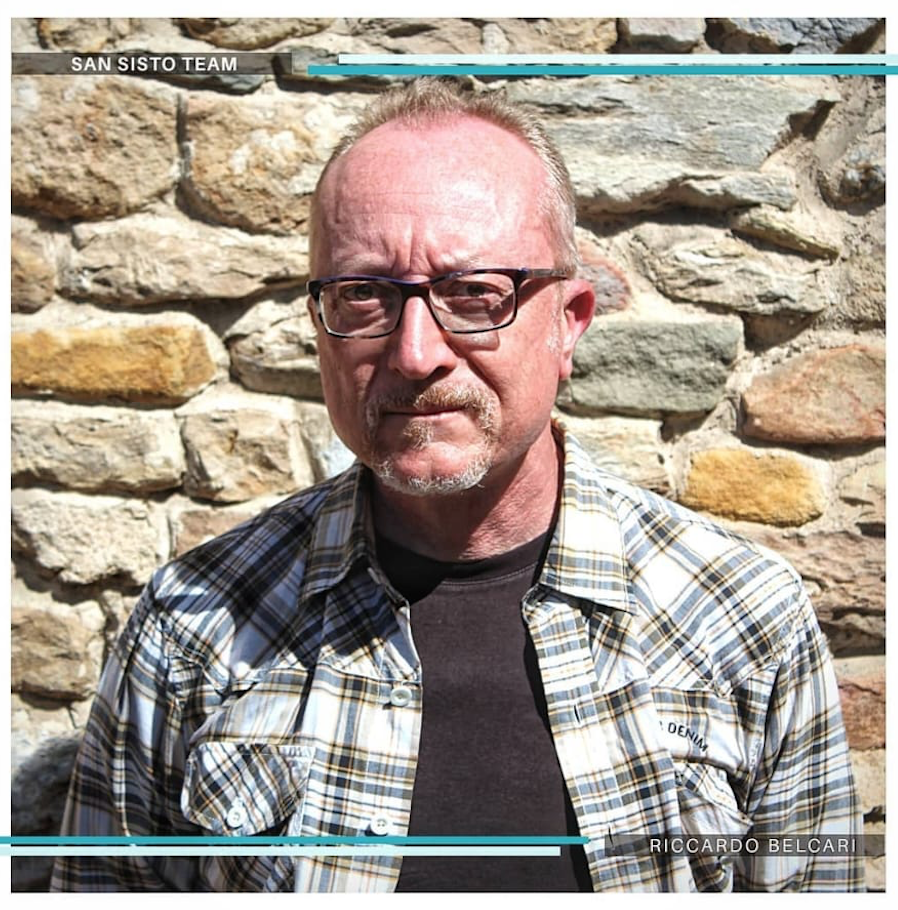
Riccardo Belcari
Research Fellow
Study in Christian and Medieval Archaeology
Short Bio
Riccardo Belcari is a research fellow in Christian and Medieval Archaeology at the University of
Pisa, Italy.
Member of the research unit of the University of Pisa – Department of Civilization and Forms of
Knowledge.
He works on the relationship between material culture, social history and mentalities.
His focus is on the Medieval craft and technologies – Built heritage – Building materials – Stone
finds – Stones artifacts, lithotechinics and reuse – Early medieval carved stones – Inscriptions and
mason’s marks.
He is a member of the scientific committee of the journal “Archeologie Sperimentali. Temi, Metodi,
Ricerche”.
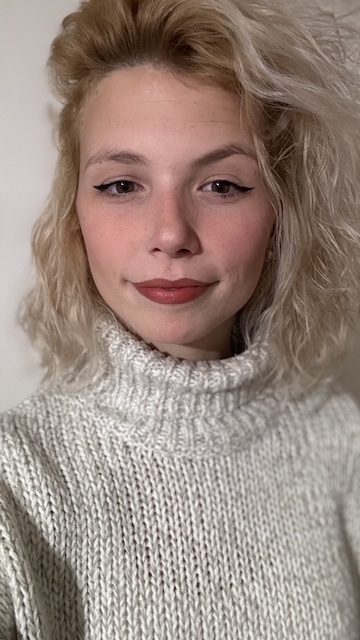
Camilla Cortina
PhD Student
PhD in Medieval Pottery from Lucca
Short Bio
During my academic career I have participated in various archaeological excavations: Populonia, Poggibonsi, Villa dell’Oratorio (Capraia and Limite – FI), church of San Sisto (Pisa), San Genesio. For my bachelor degree thesis I dealt with the development of equestrian harnesses during the Middle Ages. The master’s thesis allowed me to study the ceramic material found in excavations that took place in 2009 in Piazza San Giusto in Lucca, in the area of the medieval royal court, which allowed the identification of structures attached to the Mint. My study project of the medieval city of Lucca continued with the specialization thesis on the context of the former San Luca hospital and with the doctoral project based on the distribution of the population within the city in the central centuries of the Middle Ages.
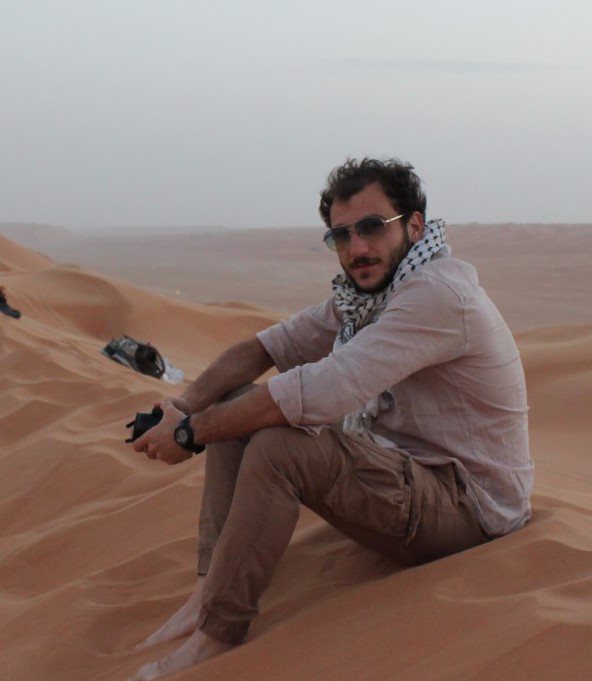
Gianluca Martinez
PhD Student
Topographic surveys, photogrammetry and 3D reconstruction
Short Bio
During my university education I explored the themes of archaeological and topographic survey, the use of information systems applied to archaeology and 3D scanning and modelling techniques, topographic and landscape reconstruction and underwater archaeology. My master’s thesis involved the creation of a “Digital Ecosystem” to support research in which a workflow was developed that integrates photogrammetric survey, management of topographic and excavation data in an open-source GIS and modern methodologies of 3D reconstruction to return a digital copy of the excavation, which can be interrogated and analysed. During these years I have participated in numerous excavations in Italy and abroad, covering the role of manager of surveys and data digitization. I am currently a doctoral student of the PASAP_Med national doctorate at the University of Bari, with a research project on the reconstruction of the maritime and underwater landscape of south-eastern Sicily.

Agnese Sagliuoccolo
PhD Student
Expert in the excavation and analysis of anthropological materials
Short Bio
During my university education I focused on the study of human remains from various medieval contexts. All of my thesis (bachelor, master and specialization) had as their subject the experimental study of groups of burials, to provide demographic, functional and pathological information about middle-ages populations. I have been involved as well in the field in cemetery contexts
directing the excavation, recovery, documentation and first treatment of
osteological findings. My current PhD project, focused on the cemetery of San Sisto (PI), adds to the traditional anthropological study the analysis of stable
isotopes, an archeometric methodology useful for the reconstruction of the diet
and the mobility of population.
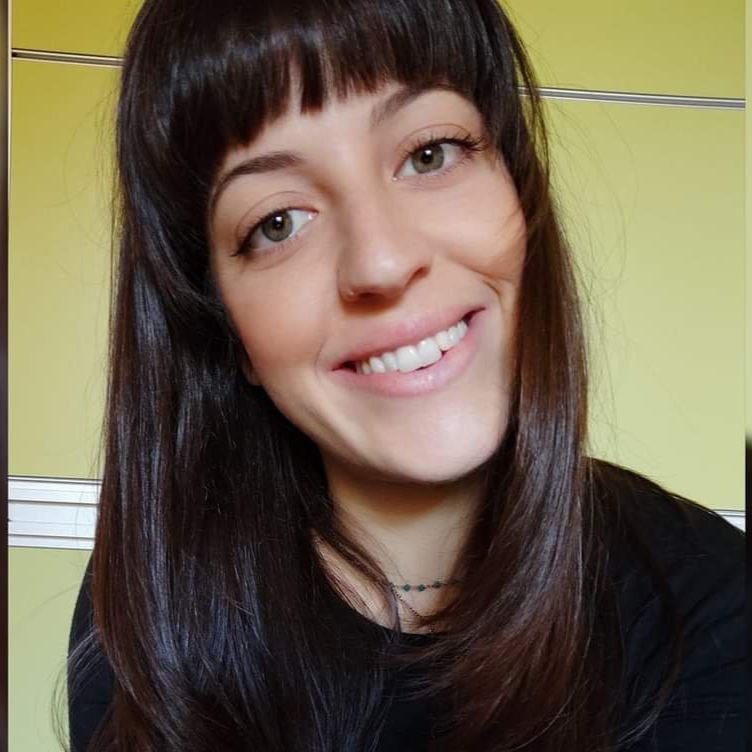
Irene Strufaldi
PhD Student
Ceramic and glass production and trade dynamics in Tuscany (7th-10th century AD)
Short Bio
I obtained my master’s degree with a thesis on the circulation and consumption of African pottery in southeastern Sicily, with particular attention to the excavation conducted in the summer of 2019 at the site of Contrada Cifali (Ragusa). During my years in the specialization school, I participated in three excavation campaigns at the Giardino di San Sisto in Pisa, and one of the contexts (area 50000) was the subject of my specialization thesis.
My doctoral project focuses on the study of ceramic and glass productions widespread in the space of medieval Tuscany (7th to the 10th century AD), with the aim of systematizing knowledge for the creation of an Atlas.

Giuseppe Tumbiolo
Research Fellow
Analysis of the cities of the Tuscan territory, in terms of continuity and discontinuity of the centers of power
Short Bio
I completed my studies at the University of Pisa where i obtained two degrees in Cultural Heritage Sciences and Archaeology and the Phd with Honors in Ancient Sciences and Archaeology. Now working as a teaching assistant of Medieval Archaeology and research fellow at the departement of Civilizations and forms of knowledge. I participated in excavation campaigns and archaeological surveys in Tuscany and Sicily as an archaeologist and coordinator of field activities.
Project work: Analysis of the cities of the Tuscan territory, in terms of continuity and discontinuity of the centers of power, describing the forms assumed in the various centuries included between the 7th and 11th centuries. Study of finds and structures found in the excavations conducted by the chair of Medieval Archeology (Prof. F. Cantini). In particular, the research work involves the analytical filing of stone and ceramic finds, their design and the creation of catalogs and photographs, necessary to reconstruct the transformations of the material culture of the center of power.
CNR Pisa, ICCOM – Institute for the Chemistry of Organometallic Compounds

Vincenzo Palleschi
Research Director at ICCOM,
CNR Pisa
Archaeometric analysis
Short Bio
Dr. Vincenzo Palleschi is a Physicist, Research Director of the Laser and Applied
Spectroscopy Laboratory of the ICCOM, CNR in Pisa (Italy). Dr. Palleschi works mainly
in the field of laser analytical atomic spectroscopy, but he also has experience in X-ray
fluorescence techniques, micro-Raman spectroscopy, multispectral imaging, 3D
photogrammetry and chemometrics. He has published more than 250 articles in
international journals, which have received more than 10,000 citations (H-index=50).
In 2012 he obtained the qualification as Full Professor in Experimental Matter Physics. He
currently teaches Analytical Chemistry V (Department of Chemistry and Industrial
Chemistry), Archaeometry (Department of Civilization and Forms of Knowledge) and
Physics Applied to Cultural Heritage (Department of Physics) at the University of Pisa.
Department of Civil and Industrial Engineering, University of Pisa

Andrea Piemonte
Associate Professor of
Topography and Cartography
Expert in Geomatics
Short Bio
Andrea PIEMONTE is a Professor of Topography and Cartography at the University of Pisa, Italy. He was born in Trieste, Italy, in 1972 and received his MSc Degree in Environmental Engineering from the University of Trieste. He received his PhD Degree in Geomatics and Geographic Information Systems from the same University. He teaches Topography for the Course of Civil, Environmental and Territory MSc Degree and Methods for the Architectural Survey for the Course of Architectural-Construction Engineering at Pisa University. He is a member of the teaching body of International Doctorate in Civil and Environmental Engineering, Florence University. He is the testing manager of A.S.T.R.O. Laboratory of Civil and Industrial Engineering Department of Pisa University. His main research interests lie in the broad area of surveying, with particular emphasis on photogrammetry, satellite positioning system, Mobile Mapping System and terrestrial laser scanning for environment and architecture surveying and modelling. He has performed several surveying campaigns with classical and innovative instrumentation both in Italy and abroad. He has developed considerable expertise in applied survey and in the integration of classical survey technique with new high technology survey systems. Since 2019 he has been head of the R&D sector of the innovative startup and spinoff of the University of Pisa ACAS3D Digital Solutions.
Case studies and Contexts
San Sisto, Royal curtis
The area of the St. Sixtus garden was investigated from 2020 to 2022. The site is recorded in 1027 as Cortevecchia, where the church of St. Peter was located.
The excavation showed a complex settlement sequence involving the construction of a large Roman peristyle overlooked by a building, occupied until the 6th century and then transformed into a cemetery area in the first half of the 7th century.
From the second half of the 7th century, the area housed the royal court: the building that overlooked the peristyle was reconstructed and large silos were built. The area is also surrounded by a moat, which will be filled in at the end of the 10th century, when the court is abandoned.
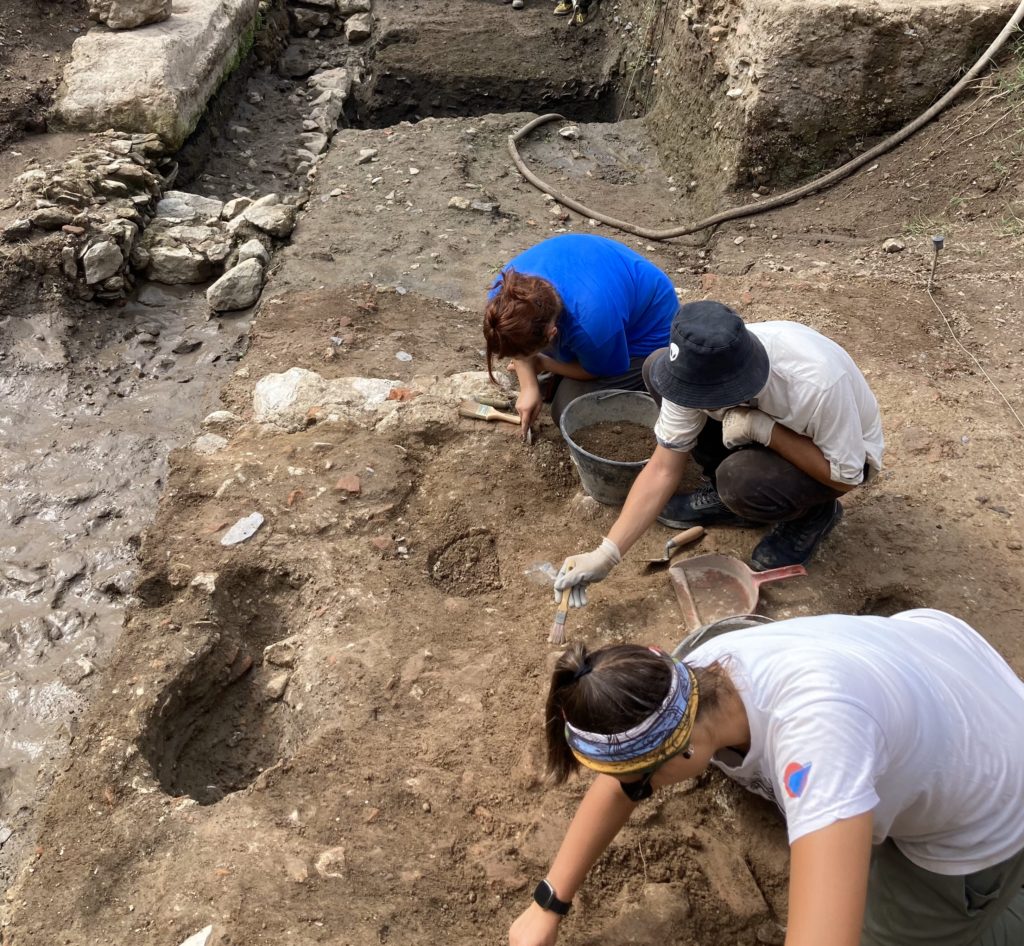

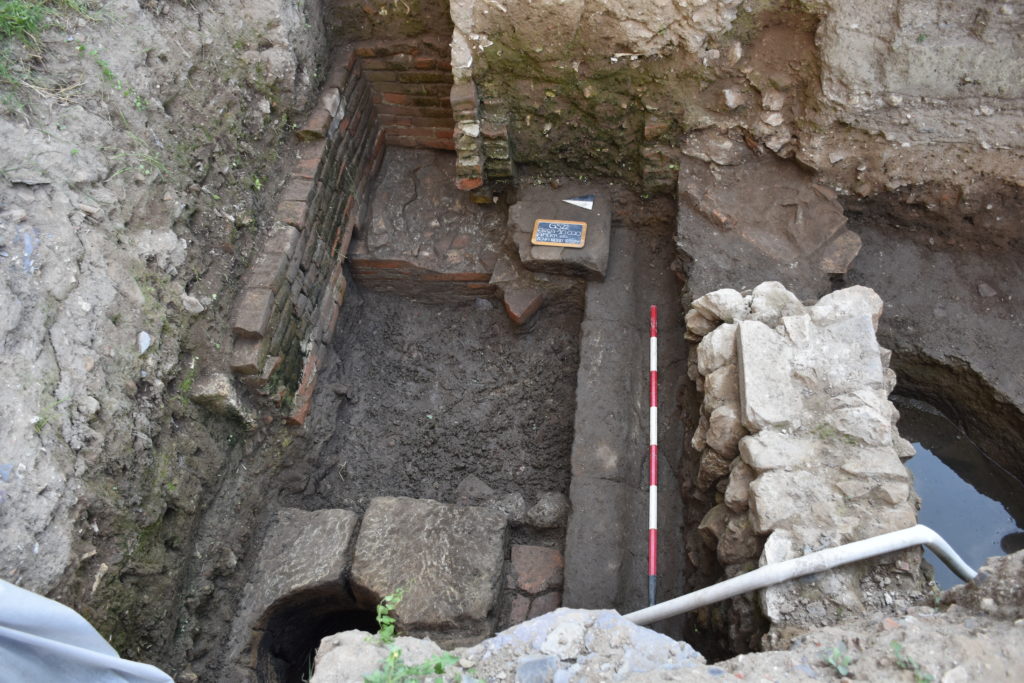
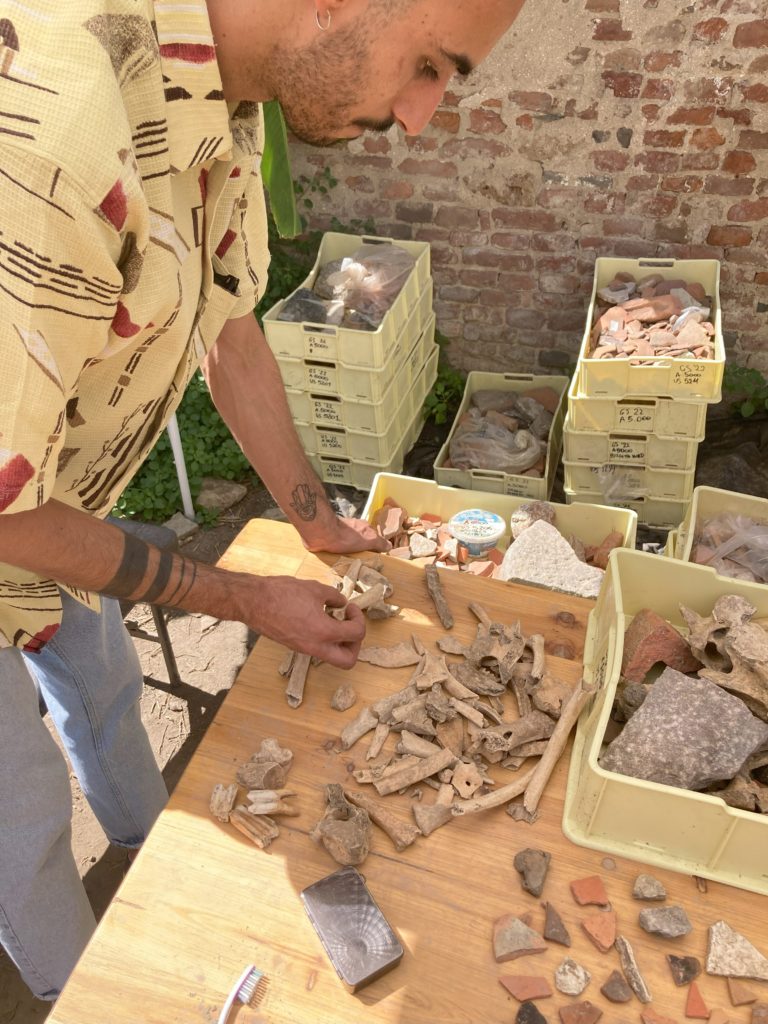
animal bones
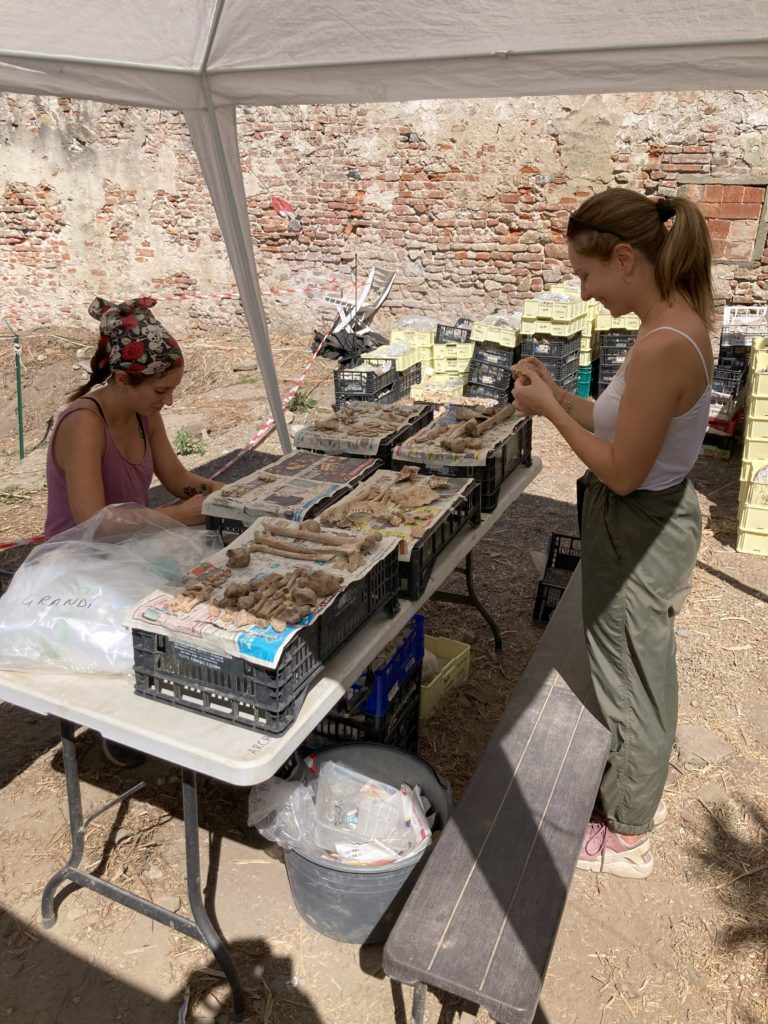
human bones
Volterra, Royal curtis
The Among the sites we have decided to investigate, we included the royal court of Volterra, which historians have placed in the area near Porta a Selci, particularly near the Church of St. Peter. The latter is attested starting from 851, when Louis II granted Bishop Andrea two new markets, one of which was at the Basilica of St. Peter near the court of Camporise. We also know that in 1001 Countess Berta, daughter of Count Rodolfo (967), owned property in a place called Porta a Selci, indicating the presence of assets tied to the high aristocracy governing the city between the late 10th and early 11th centuries.
Although the information provided by the written sources is not extensive, it is sufficient to hypothesize that the Lombard court, which later passed into the hands of the bishop during the Carolingian period, was located within the walls, near St. Peter and Porta a Selci. In planning an archaeological investigation in the area between Porta a Selci and St. Peter, we identified the St. Peter Park as the best area to investigate, as it is not urbanized and remains apart from the urban streets.
In July 2024, thanks to the cooperation of the Conservatory of St. Lino in St. Peter in Volterra, we conducted a campaign of geophysical surveys. These surveys were carried out by Prof. Adriano Ribolini of the Department of Earth Sciences at the University of Pisa. The data is currently being processed.
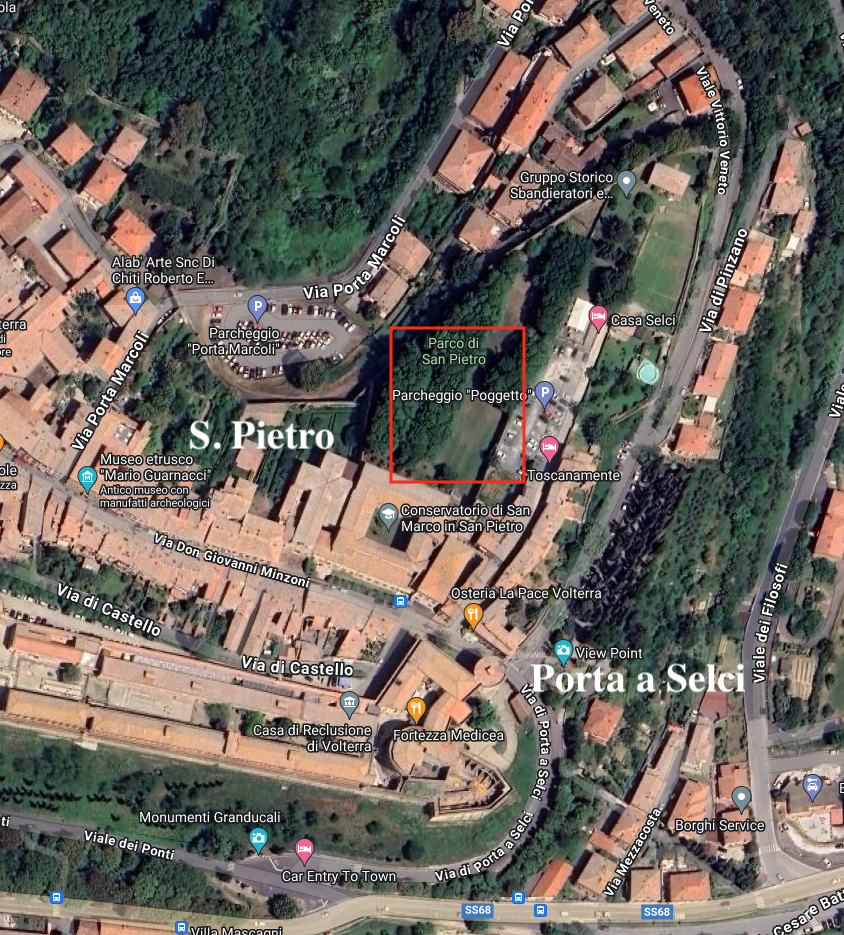
(outlined in red) in Volterra
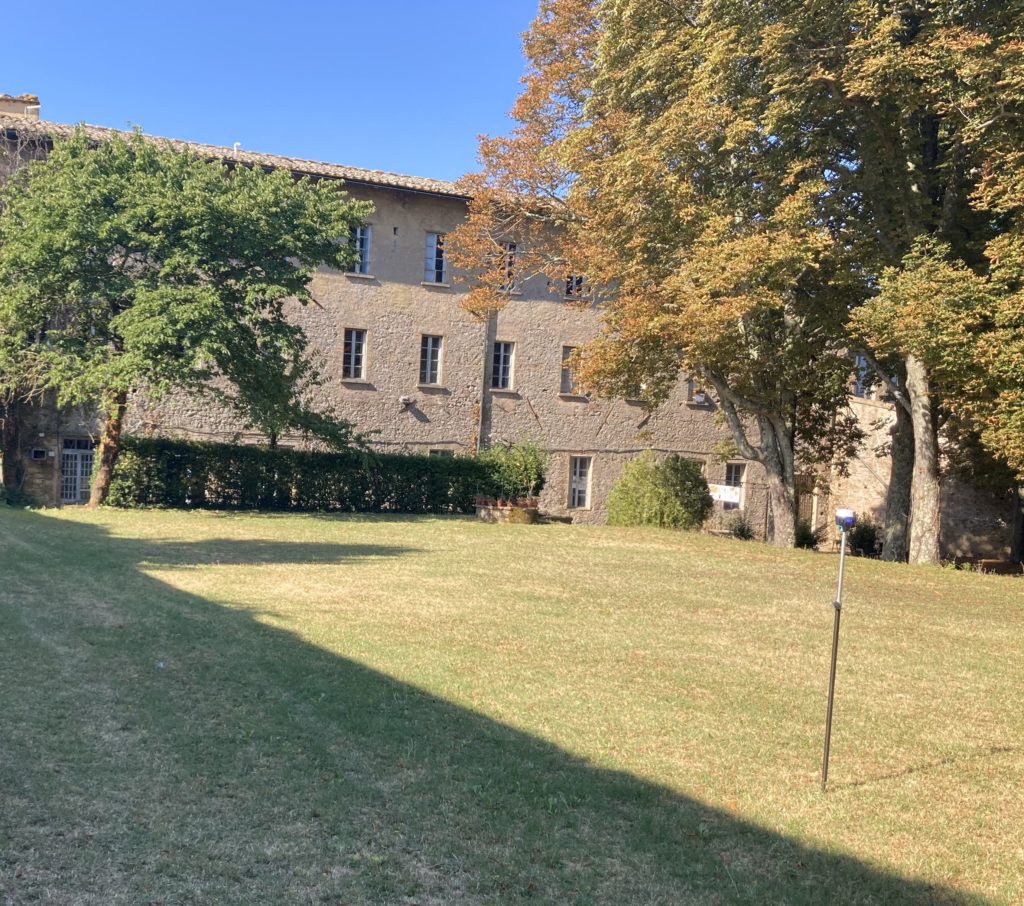
in St. Peter
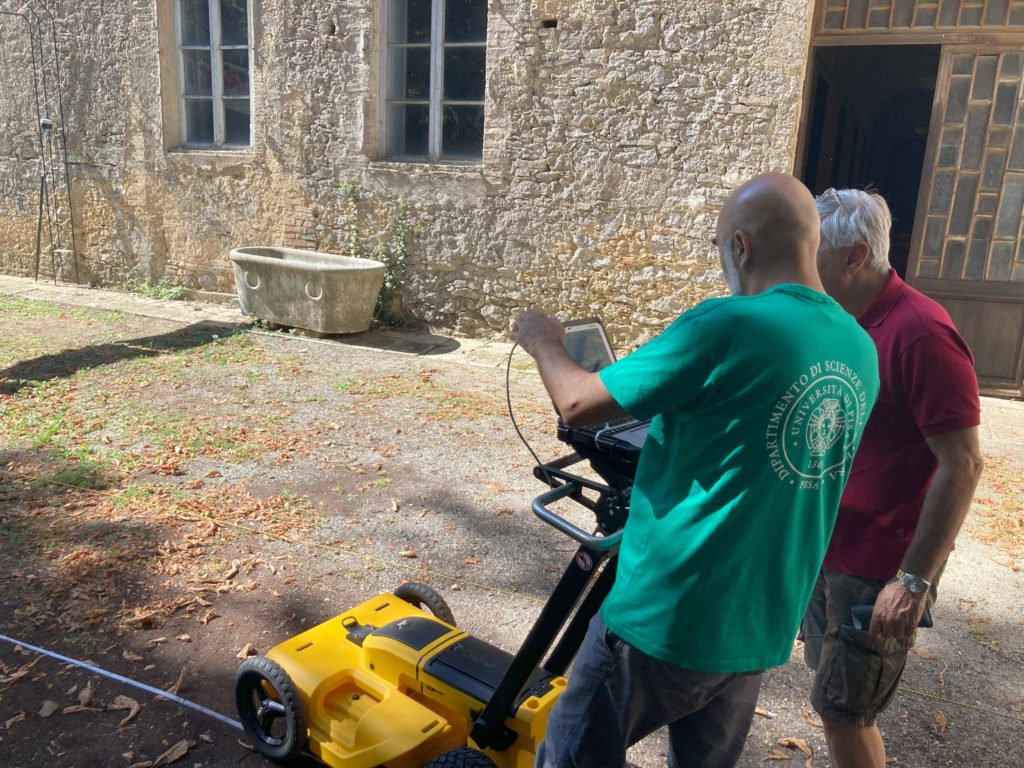
Lucca, Royal and Marchional curtis
The project involves the study of excavations conducted by the Archaeological Superintendence in the area of the Marchional court (1987; 2005) and geophysical surveys in the area of the Royal court (Piazza Napoleone – Church of St. Peter and Piazza XX Settembre – Church of St. Mary in Palatio). These surveys are preliminary to more in-depth archaeological research.
S. Quirico (Montelupo Fiorentino), Royal curtis
Although the project initially envisioned only the investigation of urban royal courts, we also decided to explore a rural royal court for a comparative study.
Our research focused on the court of St. Quirico (early medieval dedication of the current church of Sts. Quirico e Lucia) in Montelupo Fiorentino, which is mentioned in 937 when it was donated, along with other fiscal properties, to Bertha of Swabia and her daughter Adelaide, upon the former’s betrothal to Hugh of Arles, King of Italy, and the latter’s to Lothair II, Hugh’s son and co-king.
The excavation conducted inside the church between 2000 and 2001, under the direction of the Archaeological and Ceramics Museum of Montelupo Fiorentino and with the assistance of the local Archaeological Group, uncovered an older church, datable to at least the 8th century, built on a 6th-century cemetery site, which itself was established on the remains of a Roman cobblestone pavement. These findings suggest that the royal court may have been established on the remains of a Roman settlement.
In March 2024, in collaboration with Prof. Ribolini and the SO.GE.T company from Lucca, we conducted an initial campaign of geophysical surveys in the area southeast of the church. The investigations revealed a series of anomalies corresponding to field channels (ranging from Etruscan-era to Roman centuriation and possibly later periods) and buried structures, which we plan to explore further in the excavation scheduled for September 2024.

